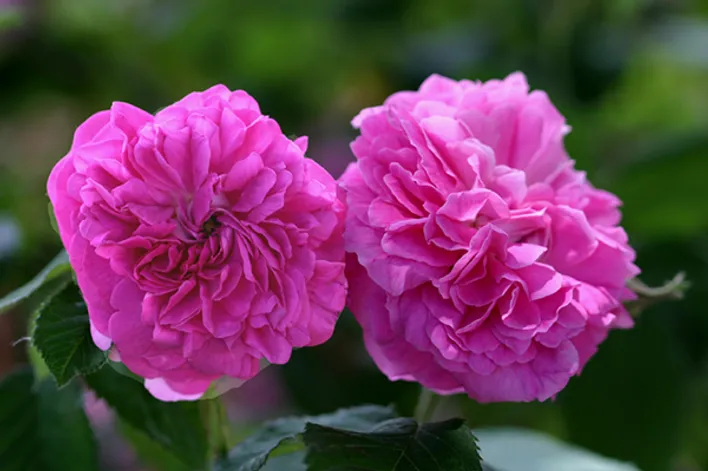by Dick Streeper, Master Rosarian, San Diego Rose Society
‘Dainty Bess’, a hybrid tea, is often overlooked as a fragrant rose. It was a seedling of the intensely fragrant and popular greenhouse variety named ‘Ophelia’ and was introduced in 1925. The powerful fragrance element clove is expressed when the bloom matures. ABOVE: Mlle Cécille Brünner photo by Rich Baer
The words rose and fragrance go together like hand and glove. When we are presented with a pretty rose bloom, our first reaction is to smell it.
Yet, we live in the dark ages when it comes to understanding fragrance in roses.
One article on this subject published in the 1962 American Rose Annual ought to be at the fingertips of every rose catalog writer and author who writes on fragrance. In “A Preliminary Study in Rose Fragrance,” author Neville F. Miller identifies the chemicals that produce fragrances and the physical qualities that define and affect them. Miller’s work was hailed by a small group interested in scholarly aspects of rose culture but was generally ignored by the rose industry and the public.
Fragrance continues to be described in terms such as slight, light, spicy, fruity and strong. One description never used in rose catalogs is “none.” It’s rather like describing colors as dull, little, bright and lots, and not recognizing the color black.
Miller lists seven primary elemental odors needed to describe, at least in part, the fragrance of most roses. They are rose, nasturtium, orris, violets, apple, clove and lemon. In addition, he names 26 less common odors, including combinations, all with rose varieties that exhibit the fragrance or odor combination. He also names the organic chemicals that produce these odors.
Most people rate fragrance on its intensity, and on that basis, roses with a rose-clove combination usually win the prize for most fragrant. However, many of the most interesting fragrances can be intense but very fleeting. Here are some facts that make the study of rose fragrance fascinating.
Roses exhibit much more fragrance in the first bloom cycle in the spring, so that is the time learn and develop a sense of smell for fragrance.
Most roses have several compounds that contribute to fragrance and are released at various times and over varying periods of time.
Many varieties have remarkably different fragrance profiles as cut flowers brought indoors compared to that found in the same flowers outside.
The power to recognize and distinguish this magnificent palette of beauty lies within us if we learn how to use it. Here is how to begin.
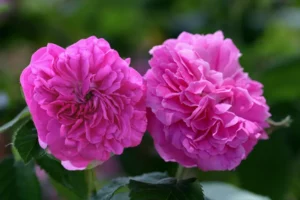
Learn the seven elemental odors identified by Miller and named above that are needed to describe the majority of hybrid tea roses. I think that Miller’s choice of the word “rose” as one of these elements of fragrance is confusing and should be replaced by the word “damask.” Damask is the fragrance found in the variety ‘Kazanlik’ (Rosa damascena var. trigintipetala) and one of the elements found in most intensely fragrant roses. ABOVE: Kazanlik
The word orris also causes confusion. The compound named orris is derived from iris rhizomes. It is widely used in the perfume and home-and food-products industries as a fixative, a compound used to preserve odors or tastes of other products. It has an odor not like an iris bloom but rather like the faint smell of violets. I would combine the elements of orris and violets into one and name it violets.
The element called lemon refers to the fruit and not its citrus blossom. The remaining four elements on Miller’s list – nasturtium, clove and apple – are easy to identify from common experience. BELOW: Lemon Spice
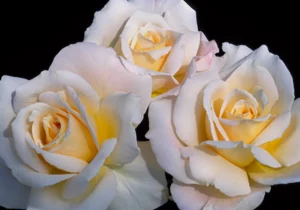
Next step in appreciating fragrance is to grow a few roses that are intensely fragrant. Here are some to include in a fragrance-study collection: ‘Oklahoma’ (rose); ‘Golden Showers’ or ‘Golden Masterpiece’ (orris-violets); ‘Garden Party’, ‘Buccaneer’ or ‘Peace’ as a cut bloom indoors (nasturtium); ‘New Dawn’ or ‘Dr. W. Van Fleet’ (apple); ‘Lemon Spice’ (lemon); ‘Dainty Bess’ (clove). You might also add ‘New Zealand’ and put it an elemental class not on Miller’s list named honeysuckle. BELOW FIRST: New Dawn, BELOW SECOND: New Zealand
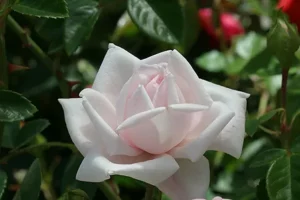
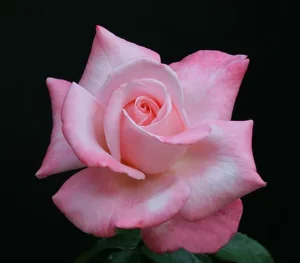
With your new fragrance-study garden in place, you can start your lab work in spring. The first exercise will be on the subject of vapor pressure, a fancy term that for laymen is the rough equivalent of evaporation rate. We all know that if we applied separate dabs of rubbing alcohol, beer and baby oil to our skin at the same time, these fluids would vanish over varying periods of time and emit odors as they do so. As they evaporate in consort, they give off a changing profile of odors.
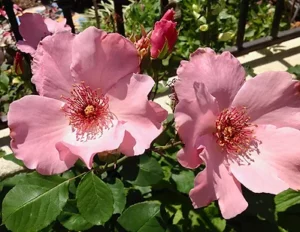
This is exactly what happens as the bloom of a rose containing more than one rose oil—or alcohol—compound opens. But the physical phenomena are more astonishing.
By way of extreme example, the vapor pressure of nonyl aldehyde, the organic chemical that produces the odor of citrus blossoms, at 77 degrees is measured at .470 millimeters of mercury. The vapor pressure of eugenol, the organic chemical that produces the odor of cloves under similar circumstances is .013. That indicates, in simple terms, the clove will evaporate 36 times more slowly than citrus. Thus, the fragrance profile is constantly changing. ABOVE: Dainty Bess by Rita Perwich.
The concept of fragrance is a bit more complicated still because we don’t know exactly when each compound of fragrance is released as the bloom opens. Plus, some roses emit fragrance from the sepals and foliage. What is very apparent is that the fragrance of a rose changes, commonly in dramatic ways, in the course of its opening.
I am reasonably certain that fragrance is also dependent upon the pH of the plant tissue and the water content within the bloom. I base this on the observation that fragrance assessment is very easy in the first bloom cycle of the year and much more uncertain during the remaining months. I also believe that the first bloom cycle of most roses produces fragrance qualities not found in the balance of the year.
Many roses that are not thought to be fragrant in the garden are intensely fragrant when cut and brought into the house. These include ‘Peace’ and ‘Honor’. Most people identify Cécille Brünner’ as a fragrant rose on the plant. When I was a practicing lawyer, I placed a bud of this rose in my lapel most every day because it held up well and released a powerful fragrance two or three hours after being in my lapel. That fragrance was quite different from that of the bloom on the plant or when cut and placed in water. These changes are related to the conversion of alcohols to aldehydes and the oxidation of oils as described by Miller.
Hundreds, or perhaps thousands, of rose varieties have lovely and interesting fragrance profiles waiting to be discovered and waiting for an Einstein to unify an approach to fragrance description in roses that is at least as understandable as the description of rose colors.
Reprinted from the San Diego Union Tribune, February 20, 2005. Dick Streeper was a past president of the San Diego Rose Society and the East County Rose Society, founder of the Inez Grant Parker Memorial Rose Garden in Balboa Park, and a past director of the American Rose Society.
Photos by by Rich Baer unless otherwise noted.

